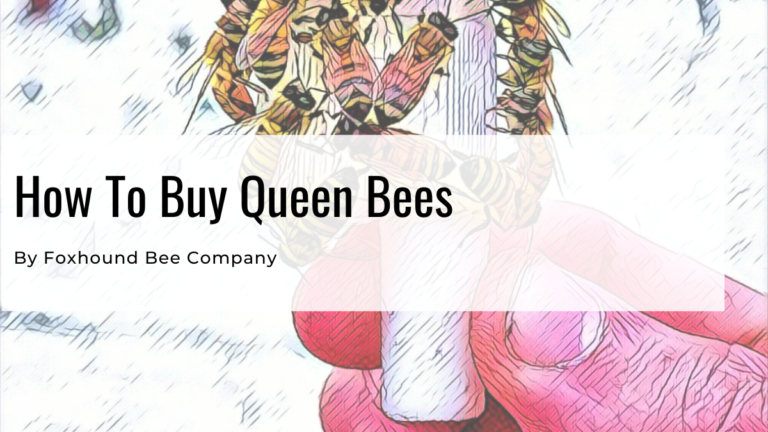Table of Contents
When you’re just getting started in beekeeping – the list of questions you’ll need to answer may seem endless.
Whether it’s running double deeps or all medium boxes, insulated or wooden hives, starting with nucs or packages…the list of questions and considerations you’ll need to address goes on.
One of the topics you’ll need to consider pertains to the bees themselves.
At a broad level Apis mellifera, known as the European or Western honey bee, is utilized in modern beekeeping. However, many subspecies of honey bees exist, each of which has unique characteristics that should be considered – whether you’re a beginner or an experienced beekeeper looking to add diversity to an apiary.
Just like dogs, all breeds have a lot in common, but each breed will have its own unique general characteristics – from a laid-back golden retriever to the high energy of hunting dogs. And then, there are those “mutts” that are just plain unique.
But from time to time, you can also the opposite of what you would expect and have a laid-back hunting dog or high energy golden retriever. Honey bees are much the same. In this article, we’ll look at some of the most common types of honey bees with an overview of the typical traits for each type.
Common Honey Bee Subspecies
Italian Honey Bee
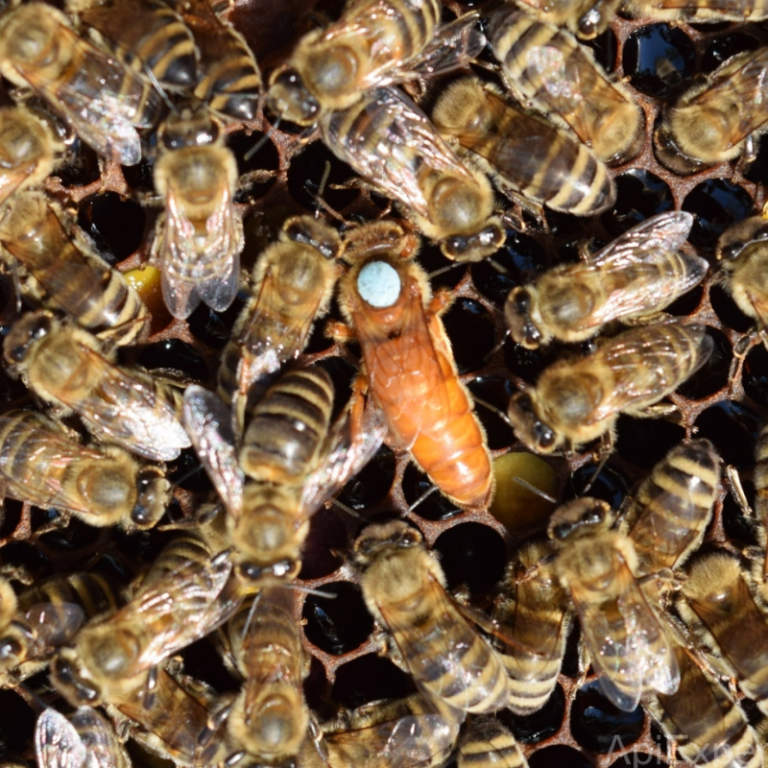
Apis mellifera ligustica, known as the Italian honey bee, is one of the most commonly utilized subspecies of bee used in beekeeping today.
From beginner beekeepers to commercial pollination operations alike, Italians are a favored bee and are known for their relatively calm and predictable behavior.
Italians maintain larger populations throughout the year – appreciated by commercial beekeepers – and are known for their pollination and honey producing ability.
Originating from the non-mountainous, more temperate regions of Italy, Italian bees like the heat and you’ll find them extremely active on those warm sunny summer days – but compared to some strains of honey bees they will be less inclined to fly and forage on cooler and / or wetter days.
While all honey bees build to large populations when conditions are right, with the large populations that Italian honey bees maintain you’ll want to make sure they have plenty of hive space and don’t become crowded.
Overall however, they are less likely to swarm when compared to some subspecies of honey bee. Italians may not be the best cold-weather bee, however many beekeepers are able to overwinter Italians even in areas with difficult winters – from upper New York State to the Rockies to Canada.
Critically however, they will require more winter stores to make it through long winters considering the larger winter cluster that Italians maintain. If you’re in a cold climate (such as the Rockies or New England) and choose Italians, make sure they go into winter heavy and provide additional fondant or emergency stores if needed.
Italians are known to be more prone to robbing (where bees from one hive overcome a weak hive and rob their honey stores) and drifting (when foragers return to the wrong hive, weakening the original hive’s population). Consider options to limit both issues when keeping Italians in your apiary. The Italian Bee is known for its bright, golden yellow color.
Carniolan Honey Bee
Apis mellifera carnica, or the Carniolan honey bee (often referred to as “carnies”) is a bee originating from the Alps, and Carniolans have adapted to this by maintaining smaller winter clusters when compared to Italians (requiring less stores to overwinter).
As a result, Carnies will rapidly expand in the spring, requiring a higher level of attention and more frequent inspections from the beekeeper to prevent swarming.
Carniolans are known to fly on cooler and wetter days and forage farther from the hive when compared to Italians. Carniolans, like Italians, are known for their relatively gentle and manageable behavior but are less prone to drifting or robbing behavior.
Carniolans are a darker bee with queens possessing a dark brown to nearly black coloration. Carniolans are also more in tune with pollen and nectar flows when compared to Italians, and if either pollen or nectar become scarce during a dearth these bees will limit or shutdown brood production to manage resources.
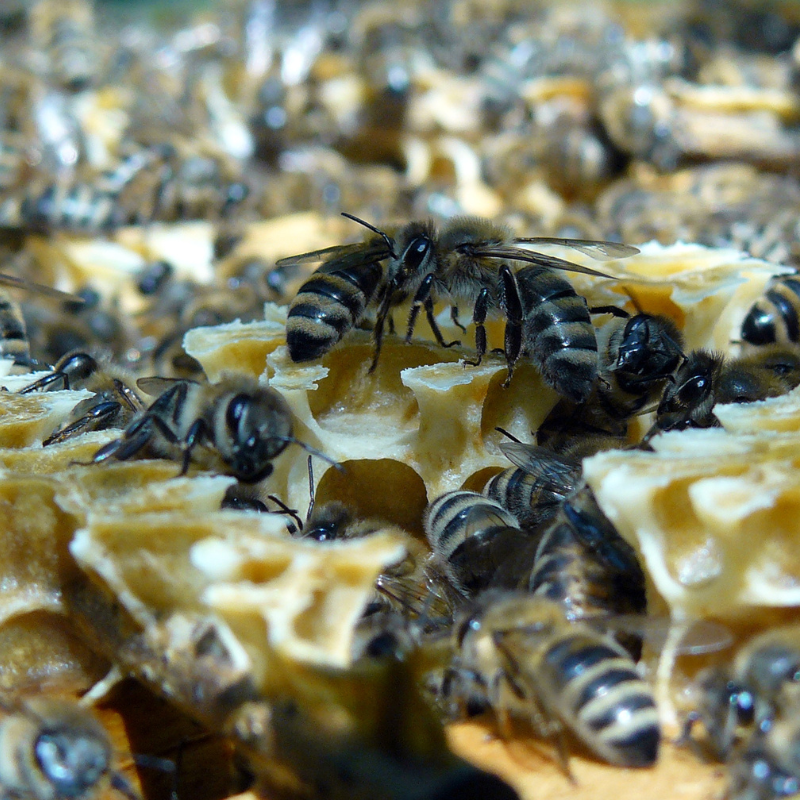
Mutts and Local Mutts
While you can purchase queen bees of whatever subspecies you feel will fit your needs the best, it can be difficult to maintain those genetics as hives swarm, supercede, or raise emergency queens, and those virgin queens then mate with drones in the area. This could introduce any type of genetics into your apiary.
The result is that over time queens in your apiary, and as a result your bees, will gradually become what many beekeepers refer to as “local mutts”. This is not necessarily a bad thing – local bees at least hopefully, are bees that are thriving and surviving in your area. With all beekeeping being local, this can be a successful way to approach building a successful apiary and may just result in some of the benefits of several subspecies of honey bees combined. When needed, queens of a specific lineage can still be purchased and introduced as desired.
Russian Honey Bee
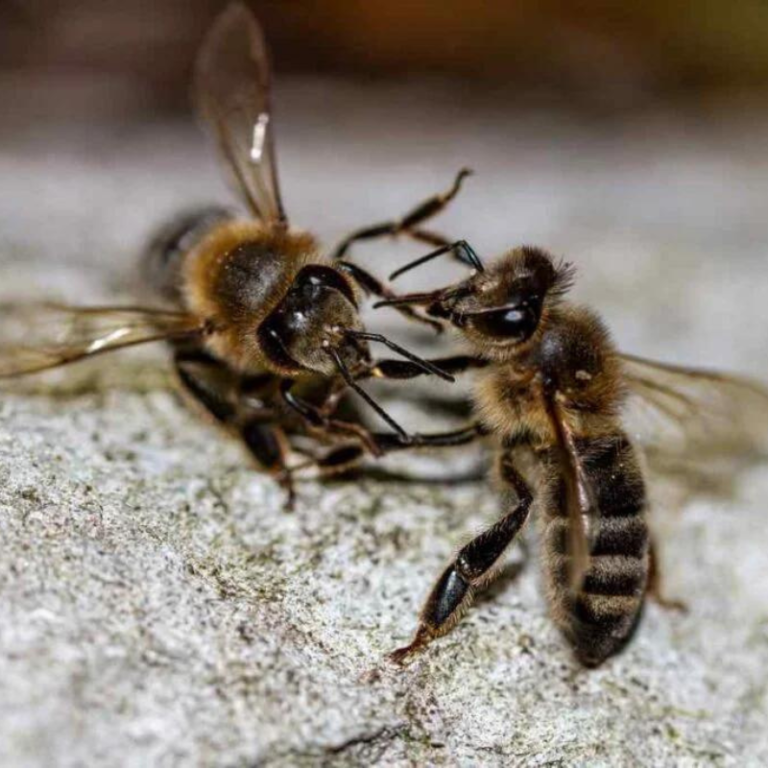
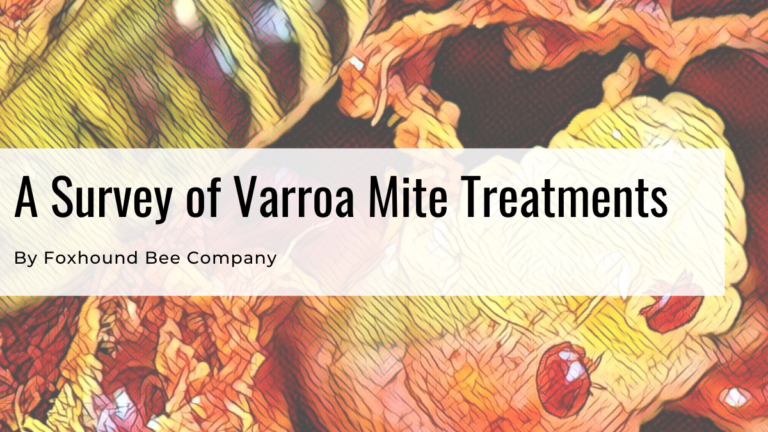
Survey of Varroa Mite Treatments
Varroa mites can be a real problem for bees and their beekeepers; understanding how to deal with varroa mites is the first step to help.
Russian honey bees come from the Primorski region of Russia, and are known as being more resistant to the invasive Varroa mite and other pests when compared to other strains of honey bees.
Similar to Carniolans, Russians overwinter with a smaller cluster and are well suited for colder climates.
However, Russians are also known as a more aggressive bee and may not be the most comfortable type of honey bee to work with for beginning beekeepers – this is one honey bee species where a full bee suit might be needed.
Due to their disease and pest resistance, Russian bees have been used extensively in genetic research scenarios in the continual attempt to help beekeepers with the fight against pests such as the invasive Varroa mite.
Caucasian Honey Bee
Apis mellifera caucasia is a subspecies of western honey bee native to the Caucasus mountain region of the country of Georgia. Known as very gentle bees, Caucasians are also known to be high producers of propolis.
While propolis can be difficult for a beekeeper to deal with during inspections, as you’ll have to pry apart glued-together frames and boxes, it is known to have benefits for the health of the hive and can be collected and processed by beekeepers for supplement use as well.
Caucasian bees are known to maintain smaller populations overwinter, but can be susceptible to nosema. Populations of Caucasians peak in mid-summer – which can be good for honey production if this matches up with typical nectar flows in your area. This also makes Caucasians easier to manage in regards to swarming.
Caucasians have the longest proboscis of any honey bee subspecies, allowing them to pollinate and gather nectar from a larger variety of flowers. This bee is prone to drifting and robbing, but will fly on cooler and more overcast days than will Italians.

Africanized Honey Bee
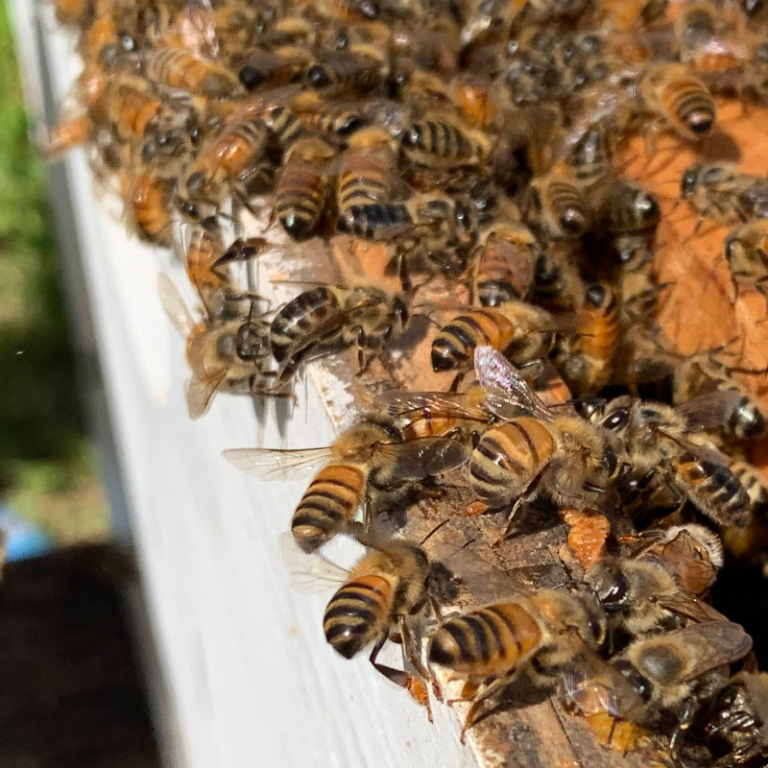
The infamous Africanized honey bee, or “killer bee” is a result of a crossbreed between the western honey bee and the East African lowland honey bee which was released into South America in 1957, subsequently spreading north to Mexico and the southern United States.
Known for high levels of defensiveness and aggression, Africanized honey bees / hives containing Africanized genetics can be found throughout the southwest United States.
Beekeepers who are located in these areas contend with the potential for their queens mating with drones from wild hives, which could introduce Africanized genetics into their apiary.
Africanized hives are known to be prolific and swarmy, and are used as production hives by some beekeepers outside the United States.
When purchasing bees and queens, understanding the typical traits that different subspecies of European honey bees exhibit will help to make sure you’re selecting the right bees for your area and the right bees that will help your apiary succeed.
It’s important to understand however that even when purchasing queens, genetics are fuzzy – while you may be purchasing an Italian queen for example, that queen may also have some genetic traits of other types of honey bees or even be an Italian Carniolan hybrid.
Some queen producers or beekeepers label strains based on the color of the queen alone, which is not always accurate.
Over time, unless you’re requeening regularly with pure stock, the genetics of your apiary will also become diverse as virgin queens mate with drones from neighboring apiaries or even wild hives.
Thus, if you are just starting out, choosing the right strain of honey bee species is not the most critical decision you have to make – no matter which way you go your bees may behave differently anyway, genetics change over time, and you can always switch later by introducing mated queens.
While there are benefits to the mite-resistance and overwintering ability of pure Russian bees, there also can be benefits to the calmness of Carniolans or to the larger, always at the ready population size of Italians. Knowing what’s needed in your apiary, what genetics to introduce, and the resulting diversity that will happen over time is all part of the puzzle and part of the fun of beekeeping.

